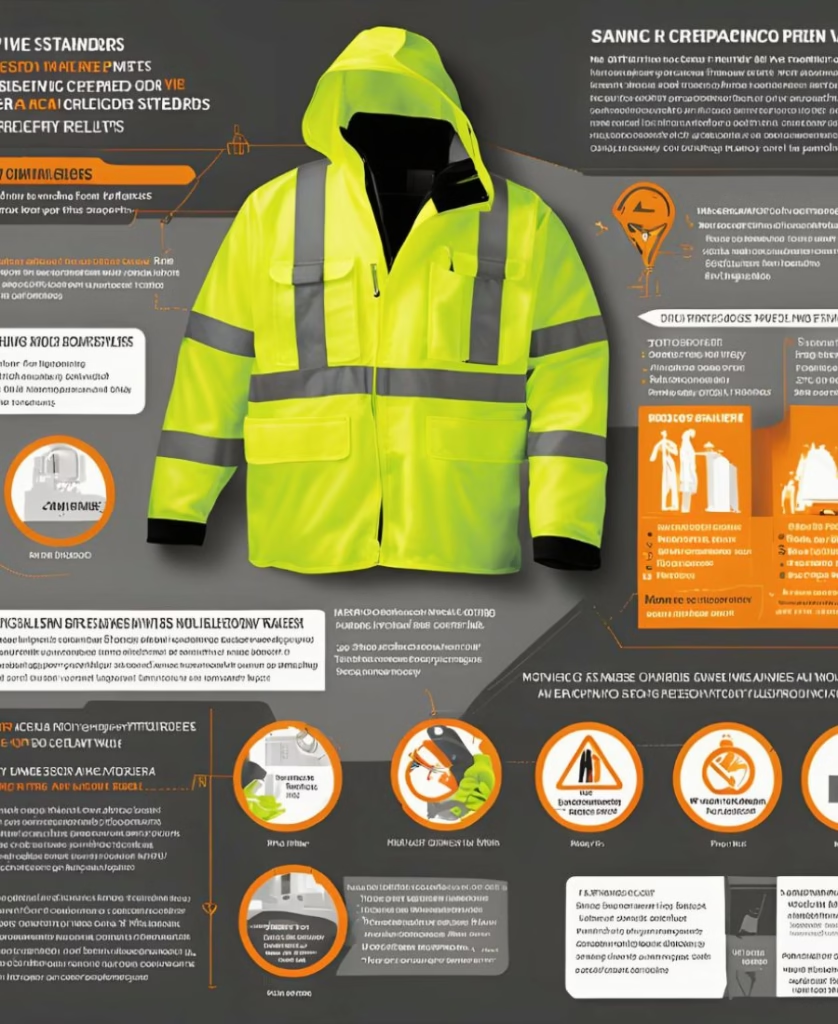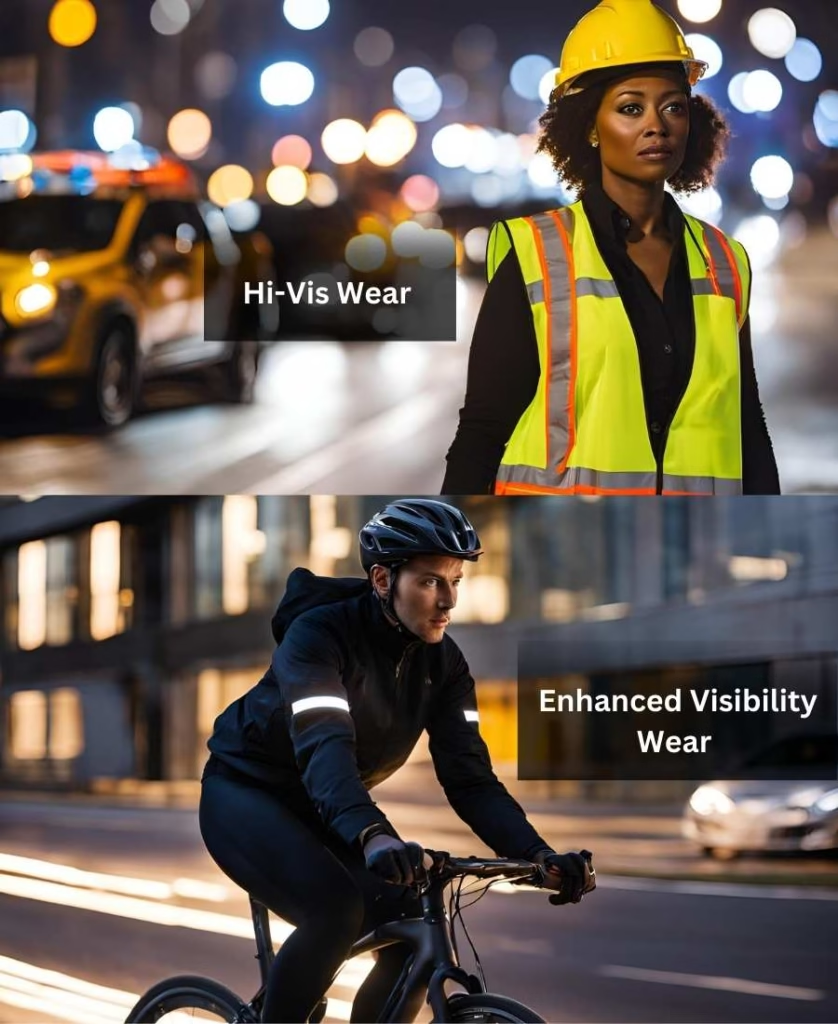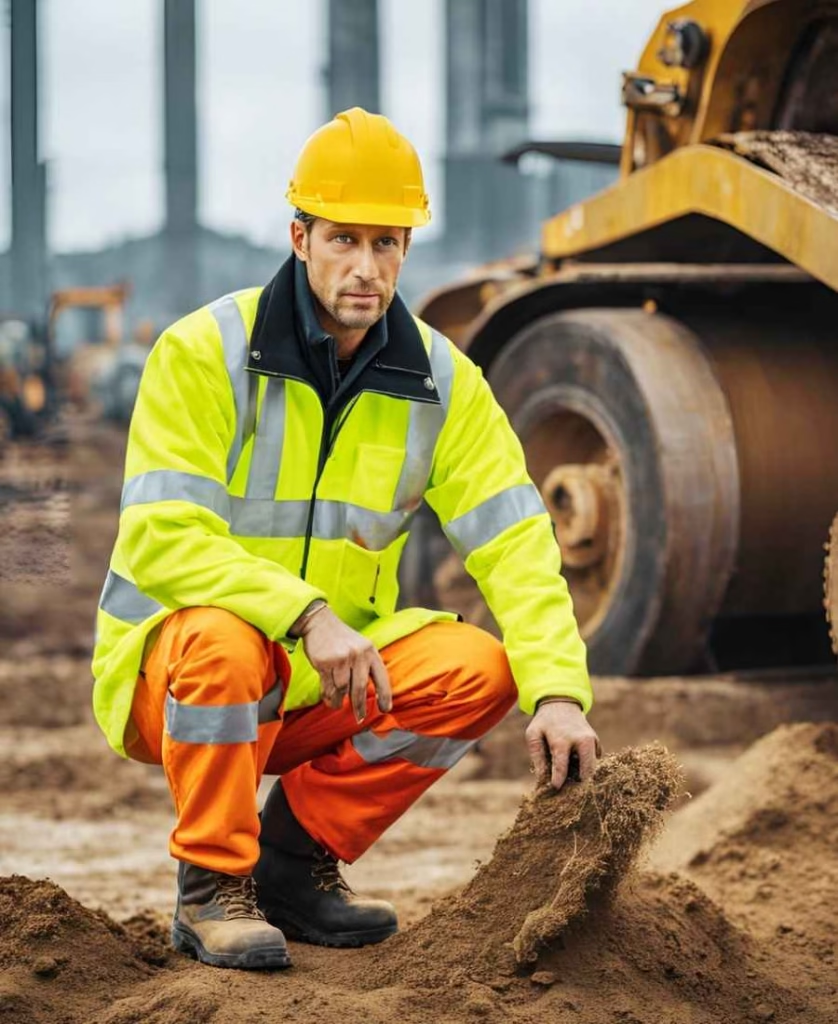In industries like construction, transportation, and manufacturing, high-visibility clothing serves as a cornerstone of workplace safety. Ensuring compliance with standards like ANSI (American National Standards Institute) and OSHA (Occupational Safety and Health Administration) is essential for reducing risks and maintaining worker safety. However, the distinctions between ANSI and OSHA standards often create confusion. In this article, we will delve into the differences between these standards, their requirements, and how to ensure compliance.
What is High-Visibility Clothing?
High-visibility clothing is designed to make the wearer easily identifiable in various working environments. This is especially crucial in low-light or high-risk conditions, where visibility can significantly impact safety. Typically, these garments feature fluorescent colors and retroreflective materials to improve visibility during the day and night.
- Fluorescent Colors: Bright hues such as yellow-green, orange-red, and red enhance visibility in daylight.
- Retroreflective Materials: Reflective strips bounce light back to its source, making workers visible in dark environments.

Understanding ANSI Standards
The ANSI/ISEA 107 Standard outlines the minimum requirements for high-visibility clothing, ensuring workers’ safety in various environments. It is the most widely recognized standard in the United States and sets guidelines for design, performance, and material.
Key Features of ANSI/ISEA 107 Compliance
- Performance Classes
- Class 1: For low-risk environments where workers are a safe distance from moving vehicles (e.g., warehouse employees).
- Class 2: For moderate-risk settings where visibility is critical (e.g., construction workers near traffic).
- Class 3: For high-risk environments where maximum visibility is essential (e.g., road construction at night).
- Garment Design
- Requires specific amounts of fluorescent background material and retroreflective tape.
- Retroreflective tape must be placed at specified widths and configurations to ensure visibility.
- Supplemental Class E
- Covers high-visibility pants that, when combined with Class 2 or 3 vests, create a full-body high-visibility ensemble.
- Testing Requirements
- ANSI requires rigorous testing for colorfastness, durability, and reflectivity to ensure garments perform consistently under various conditions.
OSHA Standards for High-Visibility Clothing
The Occupational Safety and Health Administration (OSHA) is the federal regulatory body responsible for workplace safety. While OSHA does not create specific high-visibility standards, it enforces safety requirements through the General Duty Clause and by referencing ANSI/ISEA 107 in its regulations.
Key OSHA Requirements
- General Duty Clause (Section 5(a)(1))
- Employers must provide a workplace free from recognized hazards. OSHA considers lack of high-visibility clothing in high-risk environments as a violation.
- Referenced Standards
- OSHA often cites ANSI/ISEA 107 compliance in industries where high-visibility clothing is essential, such as highway construction or roadside maintenance.
- Specific Regulations
- 29 CFR 1926.201: Requires flaggers in construction zones to wear high-visibility garments that meet ANSI/ISEA 107 standards.
- 29 CFR 1910.132: Mandates that employers provide personal protective equipment (PPE), which includes high-visibility clothing, when hazards are present.
ANSI vs. OSHA: Key Differences
While both ANSI and OSHA prioritize worker safety, their roles and requirements differ significantly:

Why Compliance Matters
Non-compliance with ANSI or OSHA standards can have serious consequences, including:
- Increased Workplace Accidents: Lack of visibility increases the risk of accidents in high-risk environments.
- Legal and Financial Penalties: OSHA violations can result in fines ranging from hundreds to thousands of dollars per incident.
- Reduced Worker Morale: Employees feel safer and more confident when provided with proper protective gear.
Steps to Ensure Compliance
- Conduct a Hazard Assessment
- Identify areas where workers face visibility risks.
- Determine the appropriate class of high-visibility clothing for each role.
- Choose ANSI-Compliant Apparel
- Select garments tested and certified to meet ANSI/ISEA 107 standards.
- Verify supplier credentials to ensure product authenticity.
- Train Employees
- Educate workers on the importance of high-visibility clothing.
- Provide guidelines for proper use and maintenance.
- Perform Regular Inspections
- Inspect garments for wear and tear, fading, or damaged reflective material.
- Replace non-compliant or worn-out clothing immediately.
- Document and Review Compliance
- Maintain records of PPE purchases and employee training.
- Regularly review workplace safety policies to ensure adherence to OSHA and ANSI standards.
Common Industries Requiring High-Visibility Clothing
- Construction and Roadwork
- Workers on highways, bridges, and urban roads.
- Transportation and Warehousing
- Delivery drivers, airport ground crews, and forklift operators.
- Utility and Energy
- Electricians, linemen, and power plant workers.
- Emergency Services
- Police officers, firefighters, and paramedics responding to incidents.
Emerging Trends in High-Visibility Clothing
- Sustainability
- Manufacturers are developing eco-friendly high-visibility garments using recycled materials.
- Smart Technology
- Incorporating LED lights and IoT connectivity for enhanced visibility and tracking.
- Improved Comfort and Fit
Modern designs focus on breathable fabrics and ergonomic fits to improve wearer comfort.
High-visibility clothing standards like ANSI and OSHA are vital for maintaining workplace safety and avoiding costly penalties. Understanding and adhering to these standards is essential for ensuring compliance. While ANSI provides technical specifications for high-visibility apparel, OSHA enforces these guidelines to protect workers in hazardous environments. By prioritizing compliance, employers can create a safer workplace, boost employee confidence, and ensure adherence to industry best practices.
Investing in high-quality, ANSI-compliant clothing is not just a regulatory requirement—it’s a commitment to worker safety and well-being. If your team operates in high-risk environments, make high-visibility compliance a top priority today.




